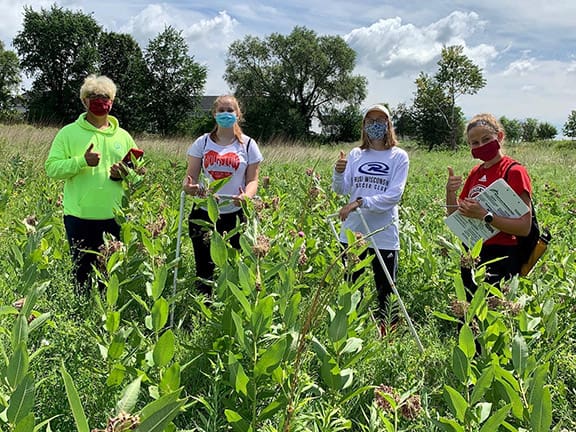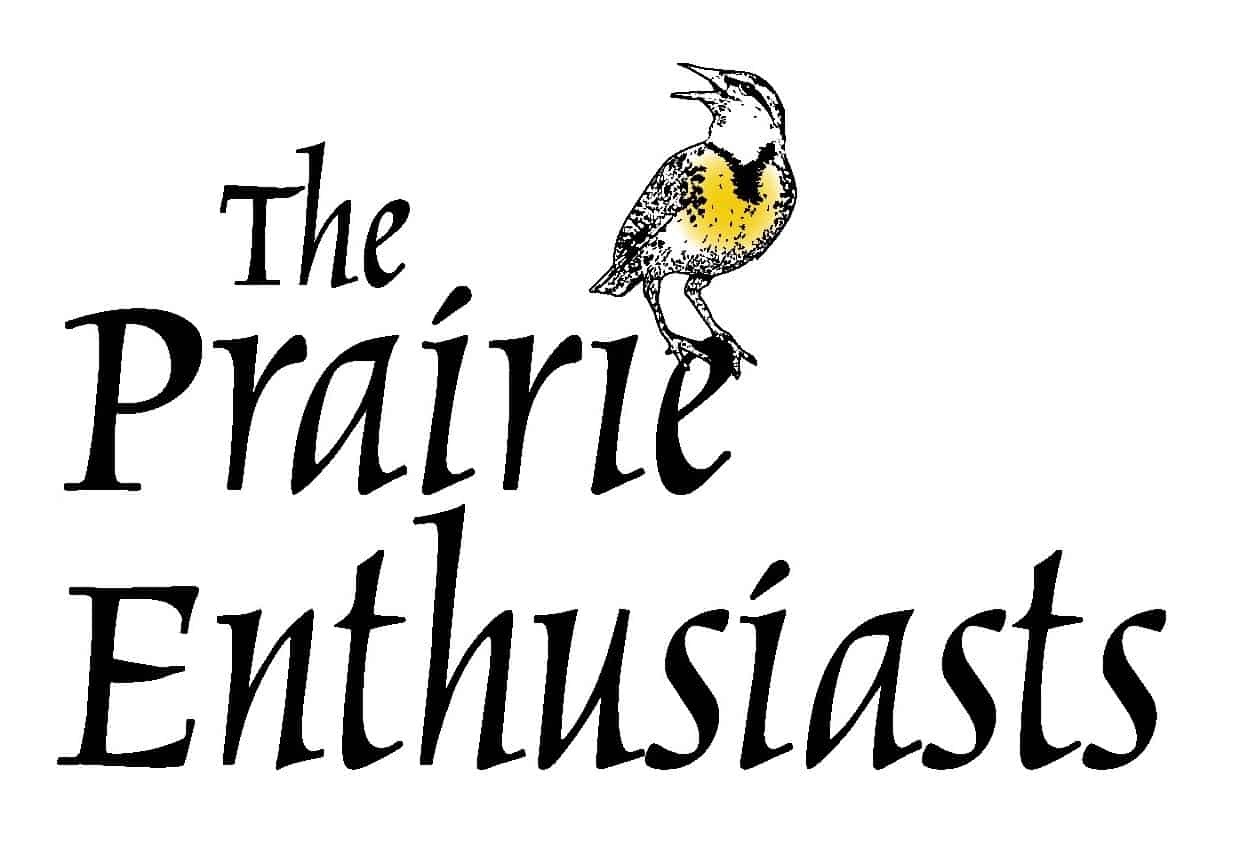In 2019, the site stewards of Moely Prairie joined forces with Sauk Prairie High School to implement a summer internship program. Participants report to the prairie once a week and conduct monarch monitoring research. Not only are these exceptional students documenting meaningful data for scientists, but they are also learning about the need to preserve vanishing pollinator habitats.
 The interns head into Moely Prairie. Photo by Amy Chamberlin
The interns head into Moely Prairie. Photo by Amy Chamberlin
The program had its start just two years ago. We at Moely were aware that monarch populations were dwindling, but I honestly didn’t know much about the specifics of their plight. In early 2018, I attended a presentation by Karen Oberhauser, monarch researcher and director of the University of Wisconsin Arboretum. She explained the myriad of reasons for the sharp decline of monarchs and spoke highly of a monitoring program that was collecting data on the species. This citizen science project was the Integrated Monarch Monitoring Program (IMMP).
Monarch monitoring and our work at Moely Prairie seemed perfectly aligned. Our restoration efforts at this remnant sand prairie in south-central Wisconsin was creating habitat for monarchs and other declining pollinators. Inspired by Dr. Oberhauser, my husband Rick and I began collecting data for IMMP that summer. We attended a local training session led by Jennifer Thieme of the Monarch Joint Venture. Soon after, we established our first monarch monitoring plot at Moely. That first year, we eased our way into the program by monitoring blooming plants and milkweed populations, both crucial for monarchs.
A generous grant from the Wisconsin Natural Resources Foundation allowed us to take on four interns in 2019. They were all students of Patrick Leigh, science teacher at Sauk Prairie High School. They conducted all levels of IMMP research. This included assessing nectar habitat, counting milkweed plants to inspect them for eggs or larvae, observing adult monarchs, and tracking parasitism.
 Monitoring monarchs at Moely. Photo by Amy Chamberlin
Monitoring monarchs at Moely. Photo by Amy Chamberlin
When our first “class” presented about their experience to the school district board in 2019, no one was prouder of them than me. As I listened to these young women talk about what they’d learned, I heard some of them say they were considering careers in science and research. Others were applying their experience to other conservation efforts, even growing native pollinator plants in their backyards.
The internship is now in its second year, largely supported by monetary donations from the local community. We’ve been fortunate to have a total of 8 students in the program since its inception. Some choose to bank volunteer hours, while others are earning science credit toward graduation. When their research ends in the fall, the students also complete presentations to various community groups, sharing the experience and knowledge gained from participating in the program.
Hands down, mentoring these students is my biggest motivation to stay involved with IMMP research. And even when the interns are done collecting data for the summer, we continue to collaborate with Sauk Prairie High School staff and administration. We, as land managers, are invited into science classrooms to give presentations about the biodiversity found in prairie ecosystems and the importance of preserving and restoring them. We also lead field trips and provide opportunities throughout the year for students to take part in hands-on restoration. These include their annual Day of Service, classroom initiatives, and our monthly work parties (where students often enlist the help of their families).
This theme of “planting seeds” of inspiration with kids and families has been a common thread woven into my career and persists even now in my retirement. Standing in the middle of a milkweed patch on a small remnant prairie in Prairie du Sac, I’m so grateful that I can continue to sow seeds with these future conservationists. For it is our young people that will carry our conservation torches forward — and to me, it’s the best investment any of us can make.

Monarch monitoring intern class of 2019 (above) and 2020 (below).
Photos by Amy Chamberlin


